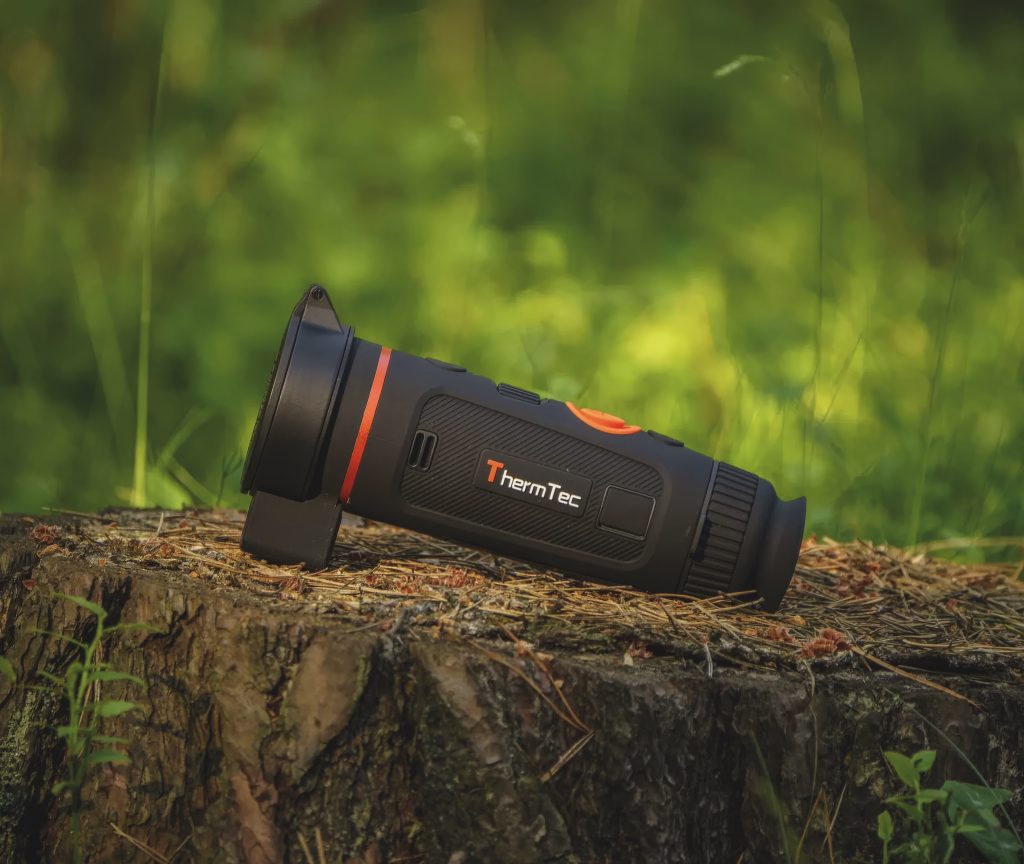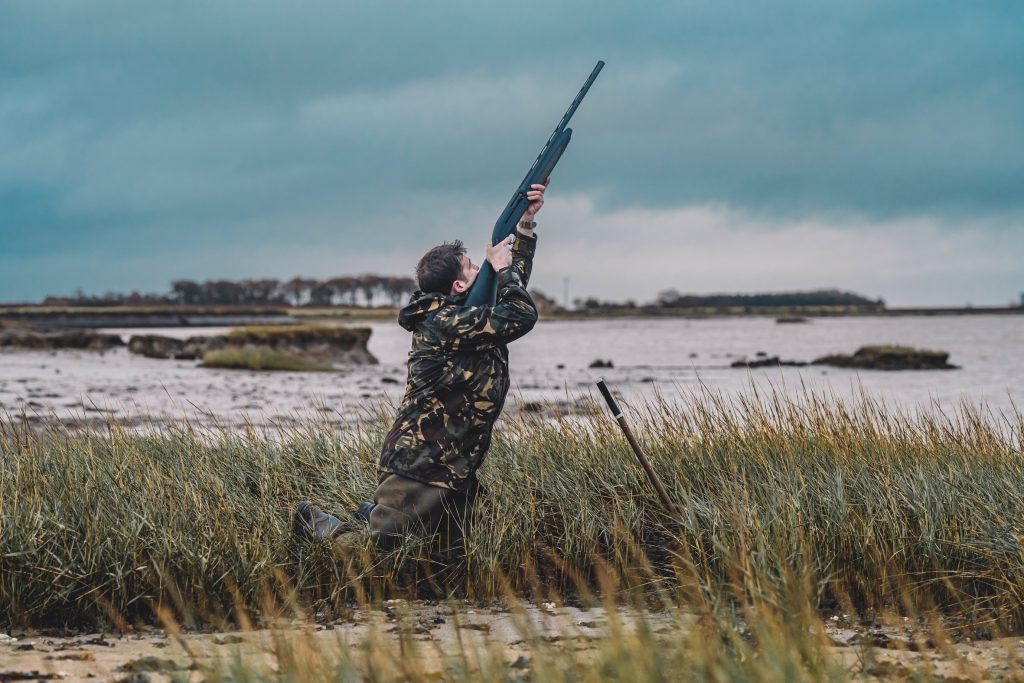Win CENS ProFlex DX5 earplugs worth £1,149 – enter here
Why are super high-powered air rifles growing in popularity? Mat Manning finds out more.
Mat Manning heads to the range with a super-high-power air rifle to see how it compares with his usual fare
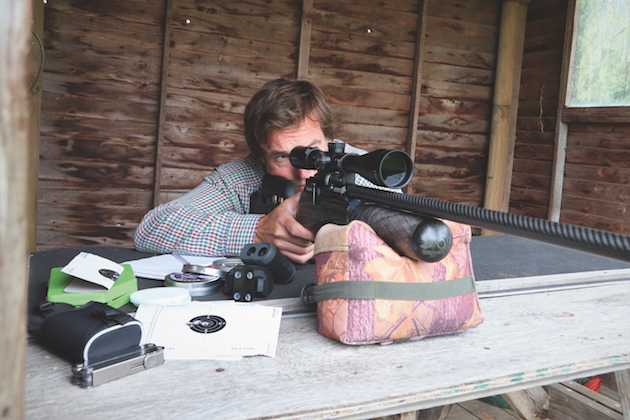 Mat settles in for some serious range testing with the .30 calibre Daystate Red Wolf.
Mat settles in for some serious range testing with the .30 calibre Daystate Red Wolf.
The popularity of the high-power air rifle has rocketed over recent years. It wasn’t long ago that on-ticket air rifles were something of a rarity, but countless shooters now seem to be moving over to them.
The shift is apparently fuelled by American shooters’ boundless desire for ever-increasing pneumatic power, although more and more UK-based airgunners are taking the FAC-option.
I have been shooting FAC-rated air rifles for about 13 years. Although I still believe that sub-12ft/lb airguns are by far the most versatile because their relatively low power can often be an advantage, it is sometimes useful to have a bit more grunt without having to reach for a powder-burner.
My preference is for a .22 air rifle churning out a muzzle energy of around 30ft/lb. My Daystate Red Wolf sits in this category and will shoot a 16gr to 18gr pellet pretty flat out to 50 metres and with far less carry and risk of ricochet than my .22 rimfire.
Pest control
By current standards, my usual FAC airgun set-up is actually pretty feeble and I almost always limit myself to head shots when using it to target pests such as grey squirrels, rabbits and corvids.
Most of the time it is all the gun I need, but there are occasions when I am tasked with controlling crows in places where the job demands discretion. An airgun is the perfect tool for the job but being limited to headshots can be restrictive, especially when targeting wily corvids that stubbornly refuse to land close to the hedges into which I weave my hides.
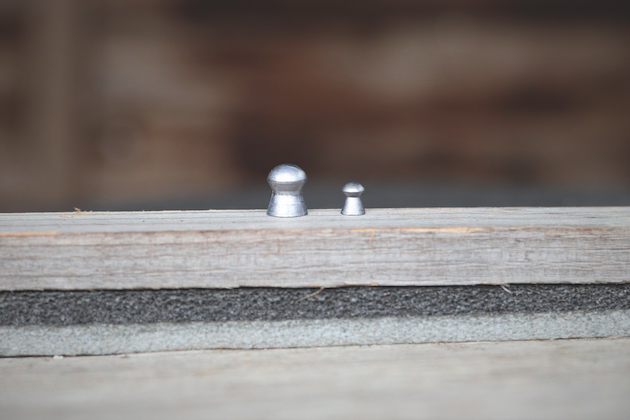
The hefty .30 calibre Daystate Rangemaster Lite (left) next to a .177 calibre pellet.
The super high power air rifle
I was recently discussing this quandary with Tony Belas, of Daystate, and he suggested that I try the Red Wolf Safari in .30 calibre. This sledgehammer of an air rifle is an uprated version of my familiar set-up, and has a muzzle energy approaching 80ft/lb.
Tony explained that shooters across the pond had been using the Safari to tackle some seriously big quarry and assured me that no crow was going to survive a strike to the upper body from this airgun. That was enough to convince me to give it a try.
The Safari measures 114cm before you fit a silencer and, with all that air cracking out from the muzzle, I was certainly going to attach one. It looks like a cumbersome gun but, at 3.8kg, it is actually very manageable and its stock design and balance make it comfortable in the shoulder. I paired the Safari with a 5-30×50 MTC Mamba Pro scope — an optic that would give me plenty of magnification if I wanted to really push the distance.
Equipped with a full air bottle, chronograph, rangefinder, bench bag, pad, pen and all my other testing essentials, I headed over to Tower Guns on the Somerset/Wiltshire border. Run by my good friend Roe Norman and based on his farm, the shop has a 100-metre range with a substantial bund behind it — the perfect place for testing high-power airguns.
After being told that Rangemaster Emperor pellets were the best option for the Safari, I had opted for the standard 50gr Emperors and the Lite version, which still tips the scales at a hefty 44.75gr. After zeroing superficially with the heavy pellets at 20 metres, I then pushed the target out to 50m and disaster struck…
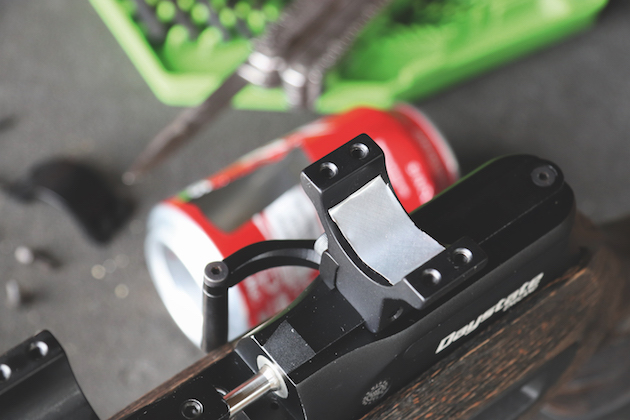
A shim cut from an empty cola drink can enabled Mat to gain more vertical adjustment on his scope
Most people who use heavy ammo with a high power airgun will know that you have literally to lob pellets on a distinctly loopy trajectory. So curved was the Emperors’ flightpath that I immediately ran out of upward adjustment on the scope and it wasn’t any better with the lighter pellets.
I thought I had pre-empted and remedied the problem by shimming the bottom of the rear scope mount with a slip of 35mm camera film when I mounted the scope, but it obviously didn’t provide enough lift.
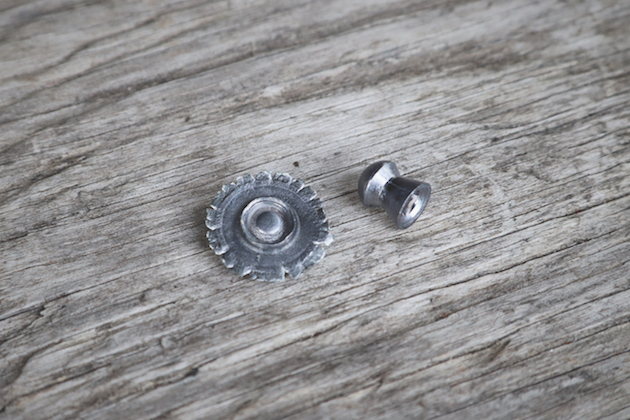
This stray .30 calibre pellet really opened up when it connected with Mat’s metal target holder.
A happy coincidence
The range session looked like it was coming to a grinding halt before it had even got going. I had a boot full of airgun gear but, irritatingly, nothing I could use to make a shim.
By happy coincidence, Roe had keen airgunner Ian Laidler staying in the farm’s holiday cottage. Ian donated an empty cola can, from which I carved a shim to fit my scope mounts. The shim was placed in the bottom of the rear ring to lift the back of the scope and thus push the crosshairs down towards the low-hitting group. I am pleased to say that it worked a treat.
With a few clicks to spare on the elevation dial, I was able to get on with some serious testing and the results were extremely interesting. Grouping was slightly hampered by a stiff right-to-left breeze, but the lighter pellets seemed to perform best.
Thanks no doubt to the Safari’s computerised internals, muzzle velocity sat consistently between 872 and 886fps, giving a muzzle energy of a little under 77ft/lb with the Emperor Lites. Hitting power is huge by airgun standards, as demonstrated by the stray pellet that hit my metal target holder before I fitted the shim. The pellet opened up to a diameter of 18mm and the cross-section was still about 5mm deep in the centre.
Of course, power counts for nothing without precision and, even in the wind, grouping was pretty good. Groups averaged around 13mm centre to centre at 40 metres and 21mm centre to centre at 50 metres — and I’d expect them to be significantly tighter in the absence of wind drift.
Average drop from 40 to 50 metres was around 27mm. I would have liked to have pushed the range further but the wind made it impossible to print meaningful groups at 60 metres and beyond so that will have to wait for another day. I was able to ascertain that average drop from 50 to 60 metres was in the vicinity of 55mm, so you really need to know your ranges in order to apply correct hold-over and hold-under when hurling such heavy pellets down-range.
Conclusion
So what did I take away from the session? The first thing is that the Safari gets through a lot of air, as it only returns about 25 consistent shots from a full fill of its 480cc carbon-fibre bottle. That is plenty of shots for most of my pest control assignments but the significant air blast means that muzzle flip is more noticeable than it is on my 30ft/lb Red Wolf.
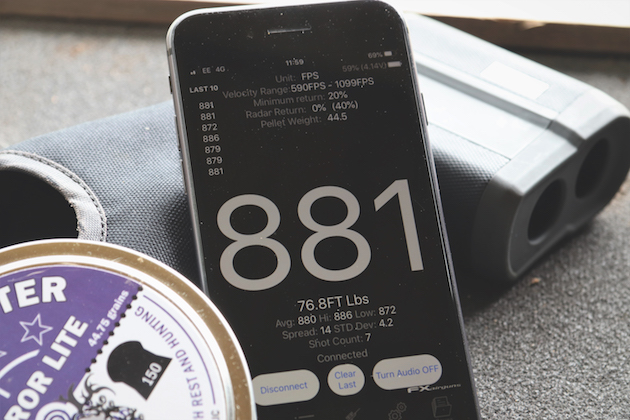
The .30 calibre Daystate Red Wolf Safari air rifle churns out significant power with impressive consistency
Responsive trigger
One big advantage of the Safari, once it has a silencer fitted, is that it is much quieter than my .22 rimfire running subsonic ammo, so it should be extremely useful for discreet pest control. It is also an easy gun to shoot, thanks to its electronic internals. Lock-time feels incredibly fast for an airgun and its electronic trigger is extremely responsive — a welcome feature as mechanical triggers can feel heavy on high-power air rifles.
I really don’t think that a mega-power .30 calibre air rifle will ever beat my 30ft/lb .22 when it comes to versatility, but I can see it proving useful when you need a real wallop without much noise. I am looking forward to a windless day on the range so I can really push the distance, and then some sessions on the crows and rabbits to see how it performs in a real pest control scenario.
Related Articles
Get the latest news delivered direct to your door
Subscribe to Shooting Times & Country
Discover the ultimate companion for field sports enthusiasts with Shooting Times & Country Magazine, the UK’s leading weekly publication that has been at the forefront of shooting culture since 1882. Subscribers gain access to expert tips, comprehensive gear reviews, seasonal advice and a vibrant community of like-minded shooters.
Save on shop price when you subscribe with weekly issues featuring in-depth articles on gundog training, exclusive member offers and access to the digital back issue library. A Shooting Times & Country subscription is more than a magazine, don’t just read about the countryside; immerse yourself in its most authoritative and engaging publication.






